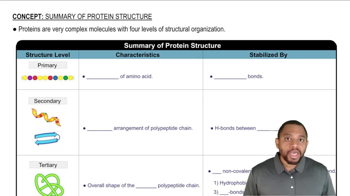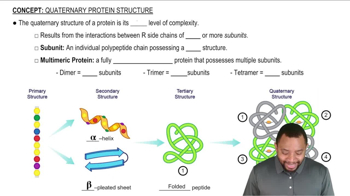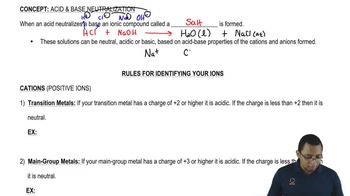List the type of attractive force disrupted and the level of protein structure changed by the following denaturing treatments:
a. adding salt to soy milk to make tofu
 Verified step by step guidance
Verified step by step guidance Verified video answer for a similar problem:
Verified video answer for a similar problem:



 2:56m
2:56mMaster Summary of Protein Structure Concept 1 with a bite sized video explanation from Jules
Start learning